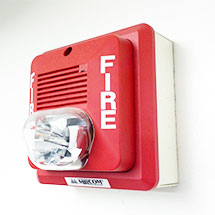How Your Fire Alarm System Works

Fire alarm systems are a key part of any good, thorough home safety plan – including yours. While you don’t need to be a bona fide technician to enjoy the benefits of a fire alert system, knowing a thing or two about how it works could help you ensure it doesn’t fall into disrepair or malfunction when you need it most.
Types of Alarm Systems
There are, in fact, a number of different types of fire alarm systems commonly used in homes and public buidings. Each of them are effective at identifying threats, but go about the process in a different way. The most typical types of modern alarm systems include:
- The M system
- The L system
- The P system
The M Alarm
The M alarm is a manual system and are generally found in older public businesses, particularly around stairwells, in hallways and nearby emergency exits for convenience. There is no automatic detector for smoke or heat, but the system is instead triggered by an individual pulling down on one of the levers located throughout the building.
The L Alarm
L Alarms are more commonly found in residential buildings. They’re the smaller, rounded machines that detect the smell of smoke and are typically located in kitchens and other strategic locations. In response to a perceived threat, they release a loud, trilling alarm and emit a bright, flashing light to warn residents of the building and allow them to escape.
The P Alarm
The P alarm does the same job as the L alarm, sniffing out the scent of smoke and notifying residents of a building on its own. However, it also goes the extra mile by alerting emergency services about the issue in order to resolve the problem sooner.
Learning how your fire alert systems work and which one you have installed in your home is the best way to ensure your fire safety plan is thorough. Work with professionals to ensure yours is working properly and to build a plan that caters to the needs and abilities of your system.
